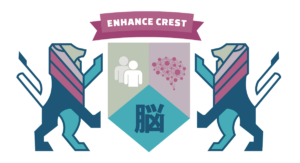
Harnessing the power of existing technology within classrooms
The ENHANCE development programme is being used by a range of different organisations, each having identified their own objectives that are linked to the many benefits it delivers.
This Inverse article from 2020 is compassionate on all of us who struggle to break bad habits, and form new ones. Wendy Wood, a social psychologist at the University of Southern California, suggests the following alongside my quick interpretations of each:
The basis of Wood’s proposition is that human will alone is not enough and consideration to factors is needed.
That decision should involve changing our environment, making the behavior rewarding, [and] figuring out how to repeat it on a regular basis so that it becomes automatic.
Wendy Wood
That decision should involve changing our environment, making the behavior rewarding, [and] figuring out how to repeat it on a regular basis so that it becomes automatic.
Whilst I agree with the three suggestions above, it may be wise to understand the mechanisms required to change neural circuitry for the new behaviour to become habitual.

Changes in the brain require chemical inputs in the form of dopamine, acetylcholine and norepinephrine. We often create habits (good and bad) when these neurotransmitters are released as a result of the activity. However, we can also trigger their release if we structure our activities accordingly and as follows:
Purpose – why. Why do you want to break or form this habit? Is it important enough to you? (Dopamine)
Energy – Are you energised by doing the activity? If not, either find a way to make it energising or don’t bother in the first place. (Norepinephrine)
Focus – Do you have the external and internal environment needed to focus on the activity for an extended period of time? This could be willpower and a suitable replacement for when you are trying to break a habit. (Acetylcholine)
If any of these factors are lacking it will be unlikely that a new habit will be formed. There is synergy here with Wood’s 3 Step Plan with enjoyment/energy and repetition/focus.
A key difference relates to the use of dopamine. Rather than gaming your brain by releasing the dopamine hit as an incentive or reward for doing something, you should trick your brain into releasing dopamine during the activity itself. This will avoid down-regulating your dopamine levels and help you derive pleasure from completing the activity itself and for its own purpose.
Within the ENHANCE Programme, the positive habit we are trying to embed is regular neurocognitive training using the BrainHQ app. For students in schools or colleges, mandating sessions within curriculum time will certainly help in the short term but the sense of purpose and associated dopamine levels will be much better if students decide to train of their own accord during study periods or whilst at home.
For all participants, we discuss the concept of habit stacking whereby the 15-20 minute sessions are bolted on to the end of another activity that is already habitual such as after morning coffee or before eating lunch.
We also encourage participants to train in a quiet environment and wear headphones to increase their focus and acetylcholine levels.
An important benefit of completing ENHANCE is that the modulation of these important neurotransmitters is improved, making any new habit more likely to stick.
For the full article visit:
https://www.inverse.com/mind-body/the-truth-about-making-breaking-habits/amp

The ENHANCE development programme is being used by a range of different organisations, each having identified their own objectives that are linked to the many benefits it delivers.

What if something is too good?
What if the list of benefits is so long that it’s difficult to find a niche?
These are challenges faced by ENHANCE as a result of the broad range of positive outcomes that it delivers

Those of you who have completed an ENHANCE programme would have already appreciated the benefit of allocating time within each day to complete BrainHQ training exercises.

Evolve Education
5 Merchant Square
London
W2 1AS
United Kingdom
Phone: 0845 519 8446
Email: hello@evolveeducation.co.uk
Monday – Friday
09:00 – 17:00 (UK)